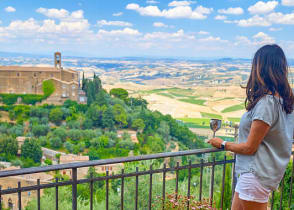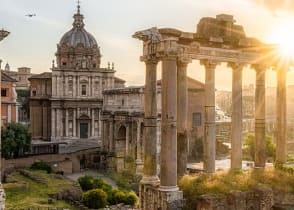12 Best Italian Cheeses to Try on Vacation

Large selection of cheeses in Italian market
This list of 12 of the best cheeses to try in Italy unveils their diversity, providing an explanation of their particular attributes, from flavor to texture, aroma to common food pairings.
The countless flavors, textures, and recipes of Italy’s cheeses derive from all over the country and are made from various animals’ milk, including cows, goats, sheep, and buffalo. While some are best used in cooking, others are eaten alone or as a garnish to elevate dishes. The possibilities are endless, with more than 450 varieties.
Investigate the flavors on our list and the locations in which each of the 12 top authenticated cheeses of Italy are typically produced so you can plan your trip to specific regions to sample the flavors you wish to try.
1. Gorgonzola • Lombardy & Piedmont
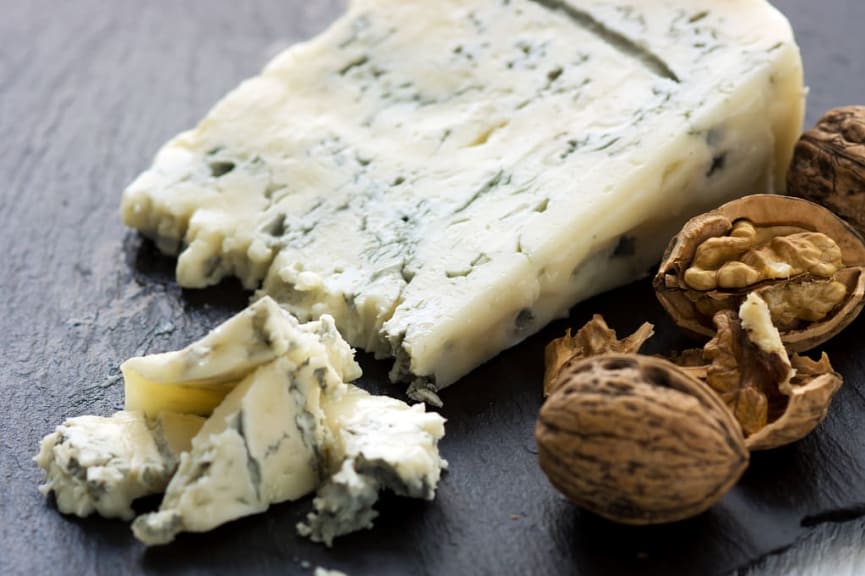
Gorgonzola
The famous Italian blue cheese is made from cow’s milk and has a crumbly or firm texture. The flavor ranges from mild to sharp, depending on maturation, and presents a nutty aroma perfectly embodying the regional flavors.
Gorgonzola is known for the blue veins growing through the cheese, taking approximately three to four months to ripen fully. It has been produced in the town of the same name since the 9th century, with two distinct varieties, Dolce Gorgonzola and Mountain Gorgonzola.
The DOP label requires gorgonzola be produced according to certain traditional methods in Lombardy and Piedmont. Pair your favorite with other local tastes during an Italy wine tour.
2. Mascarpone • Lombardy

Mascarpone
The pasteurized cow’s milk cheese is soft, with buttery, creamy, and smooth textures. The fresh aroma and semi-sweet flavor work in desserts and savory dishes. Traditional mascarpone is made in Lombardy, without needing a starter or rennet, and is the star in dishes like tiramisu and cheesecakes.
It also pairs well with fresh berries, nuts, cocoa, and espresso, as well as enhancing flavors when paired with anchovies, mustard, and other savory options. You can eat in style like the locals at cafés in the metropolis of Milan when visiting the country on a dynamic northern Italy tour.
3. Mozzarella di Bufala • Campania
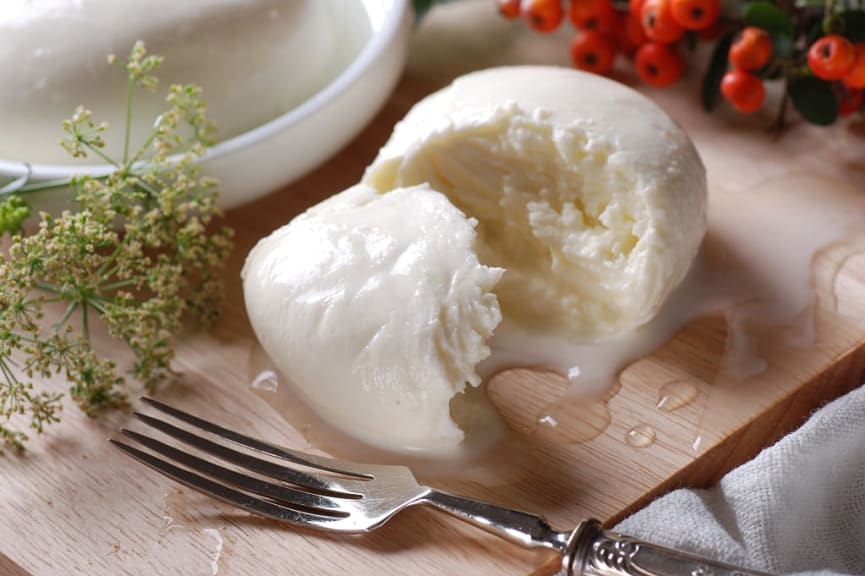
Mozzarella di Bufala
Exceptional flavor can be yours to enjoy when on an Amalfi Coast tour, as you sample Mozzarella di Bufala. The cheese is made from the pasteurized milk of water buffalo, resulting in a soft cheese with a creamy, smooth, and springy texture, and fresh, milky aroma. The floral flavor can also have a touch of lingering sourness because of the milk used.
The legendary cheese is a delicacy of Campania and has bagged a DOP label to protect the authenticity of the local cheese-making traditions and quality standards of the region.
When visiting Campania, you can introduce your taste buds to the semi-elastic textured cheese belonging to the pasta filata family in classic dishes such as lasagna or with salads and pastas that exemplify flavor and exploration enjoyed during a southern Italy tour.
4. Ricotta • Sicily
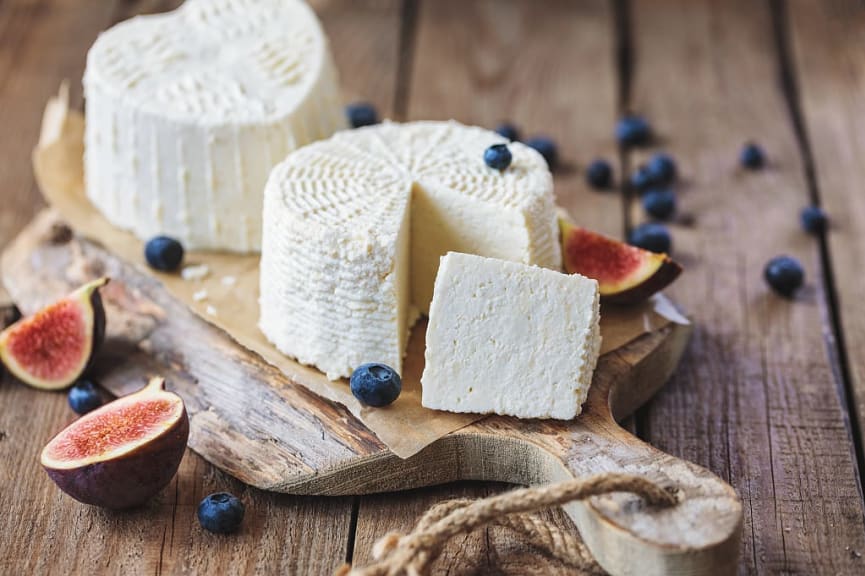
Ricotta
Ricotta is made from pasteurized or unpasteurized milk from cows, goats, sheep, or water buffalo. The fresh, firm quality has a creamy, fluffy, and even grainy texture, with a sweet flavor and milky aroma.
The cheese derives from the filtered whey taken during the production process. It typically has a smoother texture than cottage cheese and a milder, sweeter flavor, without extra salt or ripening, becoming an iconic taste on the island as you bask in your Sicily tour.
The famous cheese, a perfect companion to pasta and salads when grated or used in lasagne, manicotti, and pizza, has origins in Sicily, a stunning region you will be thrilled to visit in search of the famous cheese.
5. Pecorino Toscano • Tuscany
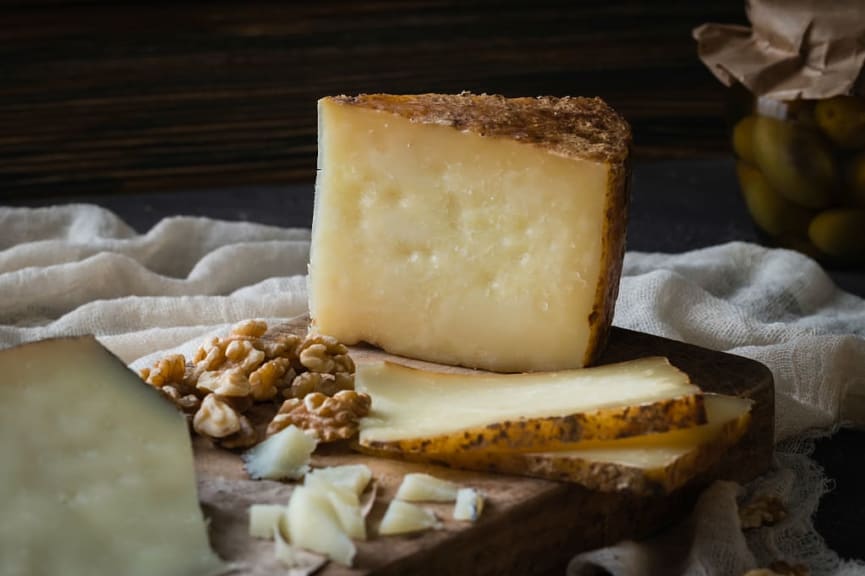
Pecorino Toscano
Pecorino Toscano is made from sheep’s milk and has a hard texture. It is fresh, with mild hints of lemon, developing bolder hints of honey when matured for up to a year.
Fresh Pecorino Toscano is aged for 30 days and the DOP designation requires it be produced using specific methods discovered within the regional borders during a Tuscany tour.
The cheese typically pairs with salads, raw vegetables, mushrooms, and Tuscan breads. Pecorino Toscano also pairs well with cold cuts or honey.
6. Pecorino Romano • Sardinia & Lazio
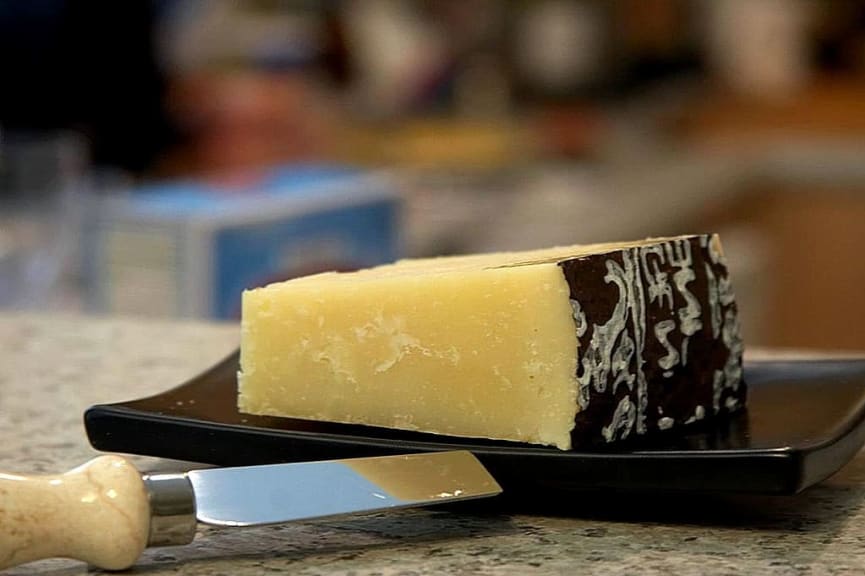
Pecorino Romano
Pecorino Romano, typically aged for eight to 12 months, is made from sheep’s milk and has a hard, crumbly, and grainy texture. It generally has a sharp, smokey, and spicy flavor, with a robust, nutty aroma.
The cheese dates back to Roman times as a staple of a soldier’s diet, mentioned by historians like Pliny the Elder and Hippocrates.
The DOP status of Pecorino Romano ensures production methods maintain the same sense of history and tradition in its areas of origin, Sardinia and Lazio, making it a perfect cheese to discover on a Rome vacation.
7. Burrata • Puglia
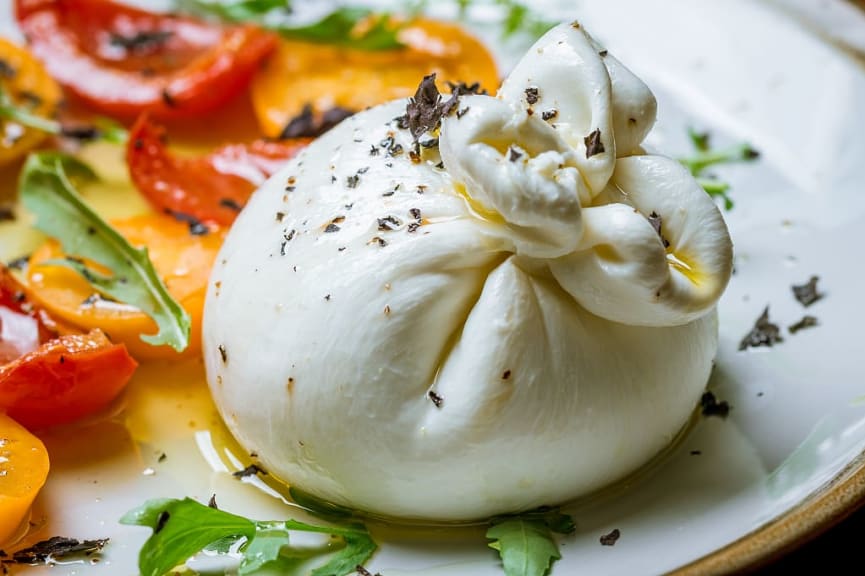
Burrata
Burrata is a fresh cheese made from cow’s milk and is famous for its creamy, buttery texture. Its freshness means a short shelf-life, requiring it be eaten within days of production.
After 48 hours, the cheese is considered past its prime. Made by filling a sack of fresh mozzarella with cream or butter, the creamy interior oozes out over the plate upon consumption, necessitating the cheese be eaten in one sitting.
If you wish to try this unique Italian cheese, then you will want to plan a trip to the Murgia province in the southern region of Puglia as you uncover new Italy vacation ideas.
8. Caciocavallo • Basilicata
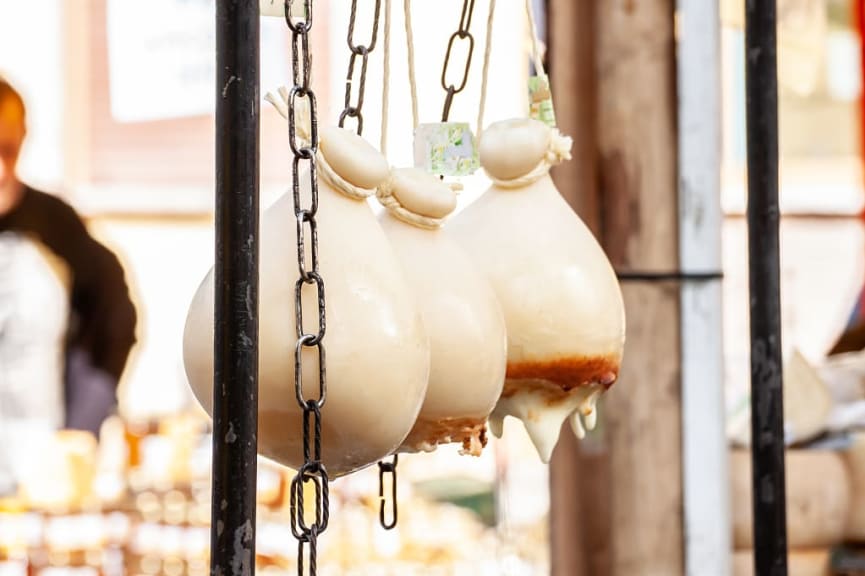
Caciocavallo
Caciocavallo is a soft, springy, stringy cheese made from cow’s or sheep’s milk. It has a sharp flavor, with spicy and tangy notes, and a strong earthy aroma.
The classic is now one of the predominant cheeses produced in the Basilicata region of southern Italy. When aged, it develops a sharper flavor, but retains a creamy quality. The cheese matures for approximately three months, before taking on a meaty flavor with hints of anise and almonds.
The distinct flavor and stunning texture of the cheese pairs well with salami, fruit, and Primitivo red wine as you gaze over cascading vineyards. Enjoy new ideas and possibilities for combining specific cuisine with meeting winemakers with our sample Italy food and wine tours.
9. Parmigiano Reggiano • Emilia-Romagna
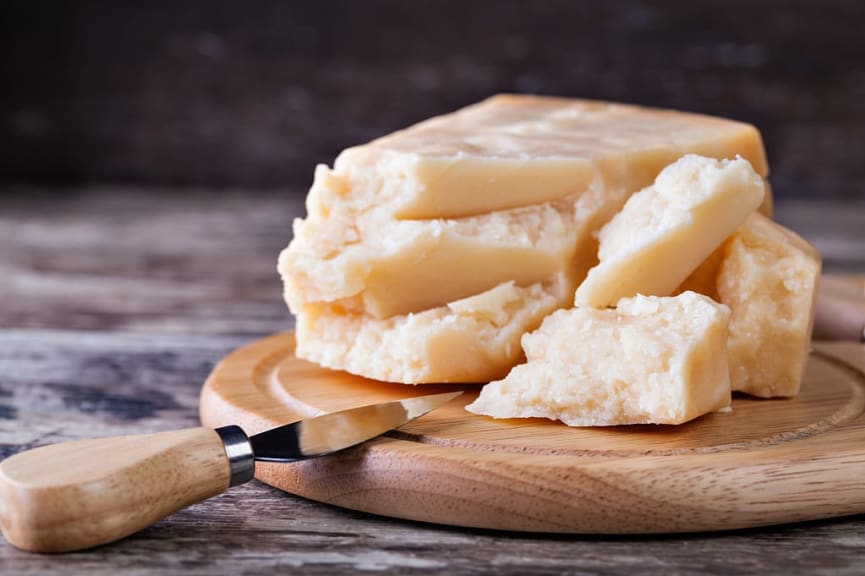
Parmigiano Reggiano
Parmigiano Reggiano is made from raw cow’s milk for a hard, crumbly texture. Typically, it has a sweet and fruity flavor, with a sharp, nutty quality and intense aroma.
The distinctive aromas and flavors of Parmigiano Reggiano grow stronger during the maturation process, taking between 18 and 24 months. However, it can last for up to 36 months.
The DOP designation of Parmigiano Reggiano requires that cheese-makers adhere to the traditional practices and historic flavors through cultivation, processing, and sales in the provinces of Parma, Reggio Emilia, Modena, Bologna, and Mantua, encapsulated on a luxury Italy tour.
10. Grana Padano • Piedmont, Lombardy, Veneto, Trentino, & Emilia-Romagna
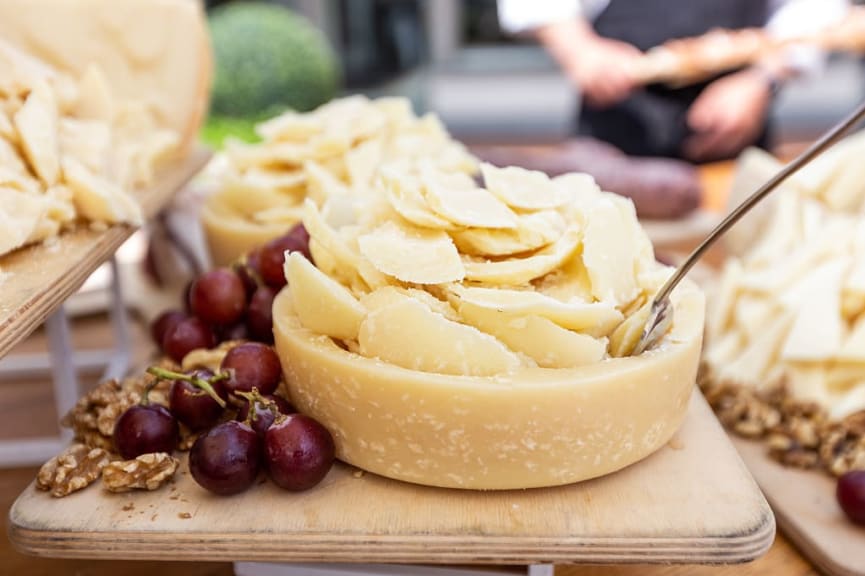
Grana Padano
Grana Padano is made from cow’s milk and has a hard texture, with crumbly, crystalline, flaky, and grainy characteristics. The cheese can age up to 30 months for a more robust and complex flavor blending nutty, savory, and sweet notes.
The DOP status of Grana Padano ensures producers follow the methods first practiced by the Cistercian monks who invented the cheese, requiring production to happen in Piedmont, Lombardy, Veneto, Trentino, and Emilia-Romagna. You may tuck into Grana Padano as a snack paired with figs, dried fruit, sliced apples, and honey, as well as with olives or cured meats as you explore during an escorted tour of Italy.
11. Asiago • Trentino & Veneto
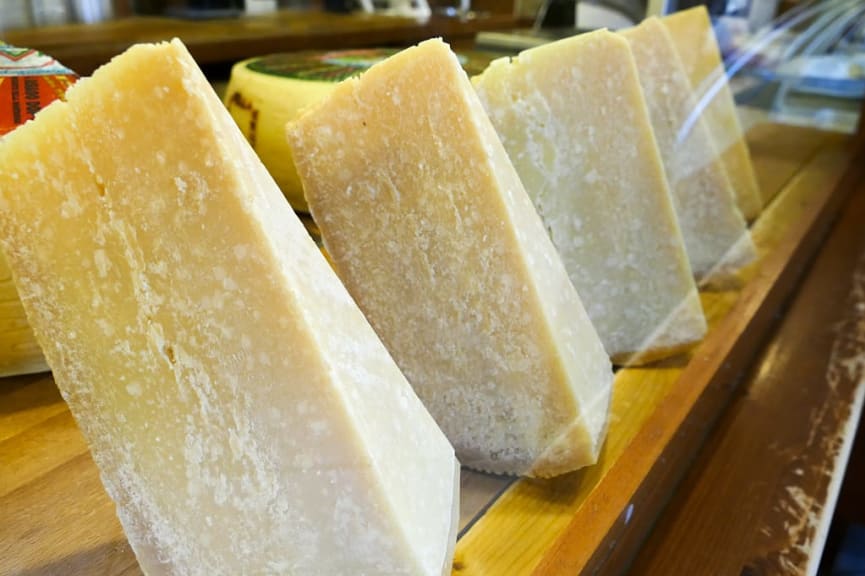
Asiago
Asiago is a firm, cooked, and pressed cheese made from cow’s milk, aged up to two years. It can be shredded to compliment pasta, used in risottos and traditional soups, or sliced thinly and served over fruit or warm bread.
Asiago’s DOP designation requires the cheese be produced using specific methods in Trentino and Veneto, along the eastern-most section of the Italian Alps. As you tour the regions, be on the lookout for asiago cheese stamped with a “product of the mountains” label. This guarantees it was made at an altitude greater than 1,968 feet above sea level. Trentino and Veneto pair perfectly with a broader Venice tour.
12. Provolone • Lombardy, Piedmont, & Veneto
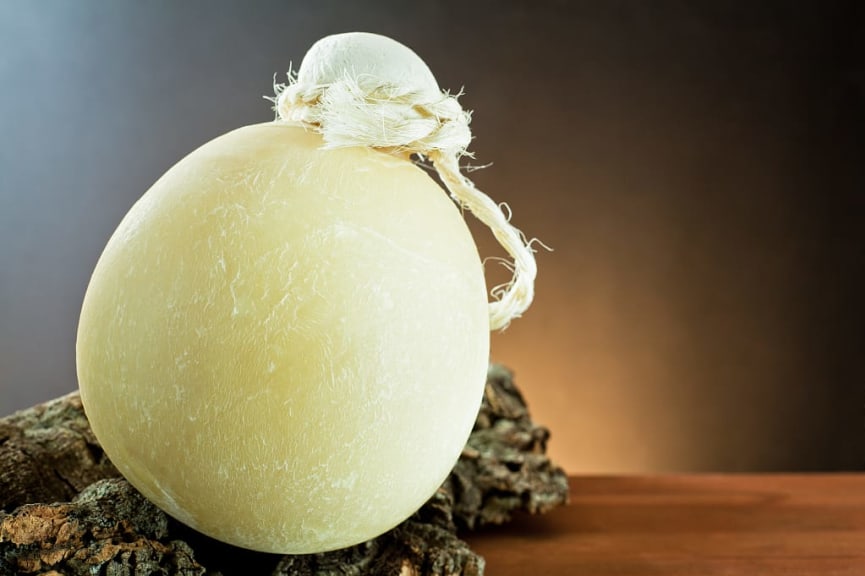
Provolone
Provolone is made from unpasteurized cow’s milk and has a semi-hard texture, with firm and grainy characteristics.
The flavor ranges from buttery to sharp, sweet to tangy, and its iconic status as Italy’s national cheese means you cannot skip a chance to try it when visiting the country.
The DOP designation requires the cheese be produced in locations like Lombardy, Piedmont, and Veneto using specific methods that guarantee superior quality, perfect for investigating when creating your Italy tour.
Enjoy the Best Italian Cheeses on Your Vacation
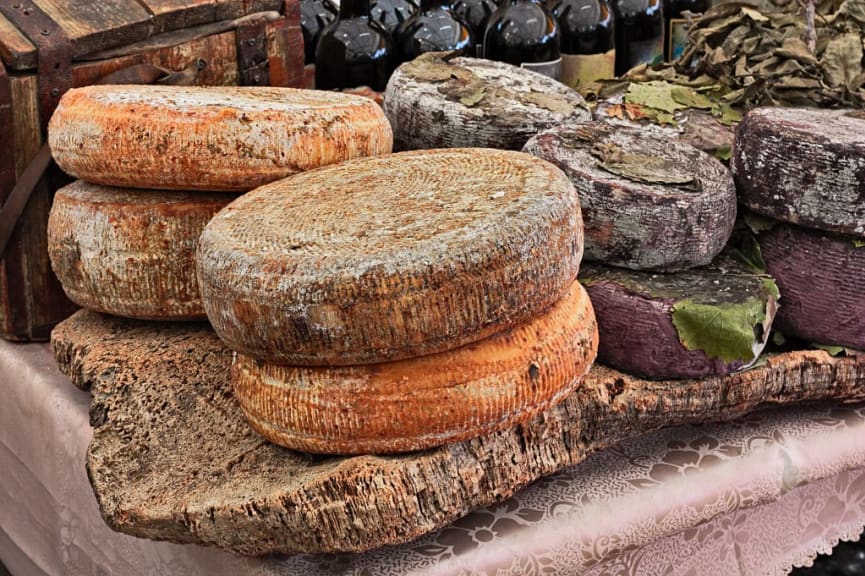
Artisan cheeses at a market in Sardinia, Italy
Italy has a long culinary history dating back to Roman times and cheese has remained an integral part of that heritage.
From the strong flavors of gorgonzola near the vineyards of Lombardy to the spicy aromas of fontina in the Aosta Valley, you can enjoy the best Italian cheese on tours available on our Italy vacations. You can find more inspiration for your culinary trip with our Italy travel guide or uncover new ideas for your culinary adventure with our Italy food and wine travel guide.
Life-Enriching Travel Designed Just for You
- 1
Trips curated by the world’s top destination experts
- 2
Concierge-level service leading up to and during your trip
- 3
Unique, exclusive experiences and insider access


